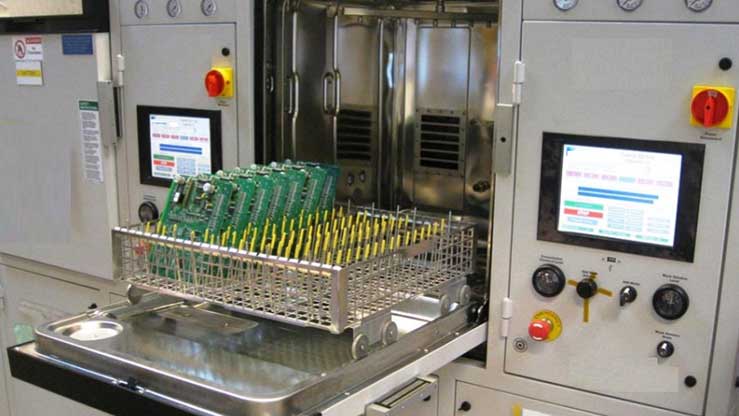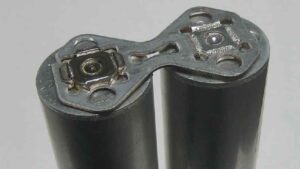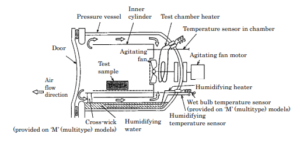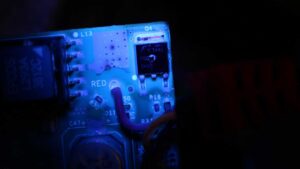How to Clean PCB?
Cleaning a circuit board may appear to be a challenging task, yet these boards are always dirty. The function and safety of these devices are hazardous by a variety of materials. By keeping an eye out for such threats and dealing with the harm they produce, you can maintain your work productive and the tools you need for the job in good working order. Continue reading to learn how to clean PCB while according to your own safety standards.
Using the correct methods and tools for cleaning a PCB (Printed Circuit Board) is critical. The simplest methods are as follows:
- Compressed Air
For basic repairs, compressed air is an unobtrusive approach to blow out any dust that has accumulated on the electronics or inside the equipment. Spray the air inside the ventilation ports in short bursts. If the dust isn’t gone, use a screwdriver to open the device and work your way around the components, carefully cleaning the circuitry with air.
- Baking Soda
Baking soda, also known as sodium bicarbonate, is an excellent cleaner that has little risk of causing damage to the board. It has mild abrasive properties that excel at removing corrosion or residue that would otherwise be impossible to remove with less abrasive methods like a brush and distilled water. Baking soda is the most effective treatment for corrosion since it dissolves the troubled area and neutralises the residue’s acidic characteristics.
- Isopropyl Alcohol
Because it is affordable and evaporates quickly, isopropyl alcohol is an excellent PCB cleaner. Alcohol contains less chemicals than other cleansers used for comparable reasons. It’s critical that the isopropyl alcohol used to clean your circuit board has a concentration of 90% or higher. Because high-percentage isopropyl alcohol can have negative side effects when it comes into touch with the body, handle it with caution and wear latex gloves and goggles.
- Distilled Water
Due to the absence of ions that are conductive to electric devices, distilled water triumphs over any other form of liquid when mixing your cleaning solution. Because it is a weak conductor, pure distilled water will not harm electronic gadgets.
It can also be contaminated fast by dirt on your hands or in the air, so store your distilled water in a sealed container when not in use and avoid touching it with your bare hands.
- Household Cleaners
You should also have a phosphate-free household cleanser on hand. While phosphates can be an effective corrosion inhibitor chemical and have other cleaning capabilities, phosphorus pollution in lakes has been a real concern, and many cleaning product makers have moved away from using them. Companies have since responded to make phosphate-free cleaners that work just as well.
Tools for Cleaning Printed Circuit Boards
In the cleaning procedure, the brush you use is also crucial. The best choice is a brush with soft bristles that is small enough to reach little areas. If your organisation does not have a specialist scrubbing tool, a toothbrush or paintbrush are the finest options. Cutting a paintbrush diagonally is a useful approach for cleaning with the short side while reaching difficult angles with the long side.
Lint-free towels, such as microfiber cloths, should be kept on hand to clean and dry your circuit boards. This sort of cloth does not shed debris even after extensive use, which is counterproductive given that your purpose is to remove the unwanted material from inside the affected devices.
You can also use household appliances like the oven to speed up the drying process. Although an oven that is actively heating should never be used to dry electronics, the hot environment is a perfect place to dehydrate any excess moisture after cleaning. It’s also good to use a blow dryer or a desk lamp instead of an oven as the drying catalyst.
Whatever material has dirtied your circuit board, follow the same steps. The equipment should be removed from the dirty surroundings, disassembled, and washed with different cleansers depending on the job.
How to Clean Corrosion From a Circuit Board
Common home products can be used to handle corroded devices, and your organisation can apply careful strategies that should not be difficult for individuals in the electronics field. You’ll need the following items:
- Baking soda
- Distilled or deionized water
- Soft-bristled brush
- Phosphate-free household cleaner
- Lint-free towel
- Household oven
It’s time to make your cleaning solution and prepare your circuit board for restoration once you’ve acquired all of the necessary tools and materials.
Steps to Clean a Circuit Board
- Using a quarter cup of baking soda and 1 or 2 teaspoons of water, make a cleaning solution that is thick in consistency.
- Take a photo or make a note of the circuit board’s arrangement so that reassembly is simple after the cleanup.
- Remove any chips from the circuit board by disconnecting cables.
- Dip your brush into the solution you’ve made and gently scrub the corroded sections of the board to loosen them up.
- Allow 20-30 minutes for the baking soda and water mixture to dry on the circuit board after you’ve applied it to all of the affected regions.
- Rinse the circuit board well with distilled water to remove any leftover dried baking soda. If you’re having difficulties with this technique, try using a separate wet brush.
- Spray the entire area with your phosphate-free cleanser, such as Clorox or Lysol, and let it sit for about 15 seconds.
- Scrub the board lightly with your clean toothbrush once more, then rinse and dry with a lint-free cloth. Rather of wiping it down with a dragging motion, lightly dab the circuit board to avoid any damage.
- Preheat the oven to 170 degrees. Turn it off once it reaches the desired temperature, then insert the circuit board. Allow three hours for any moisture left over from the washing operation to dry completely. Depending on your oven and device, you may want to take it out sooner or leave it in longer.
- Reassemble your circuit board and test it to ensure that it is working properly.
If your PCB is still not working properly and corrosion is visible, try erasing the rest of the mess with an eraser. When corrosion has built up on copper, this approach is quite effective.
EMSxchange Enables you to select a Printed Circuit Board assembly suppliers meeting your Required PCBA Manufacturing Capability, capacity and Certification Criteria from a global PCB Assembly manufacturer base. EMSXchange takes complete responsibility and ownership for your electronic manufacturing process and all its deliverables from contract manufacturing supplier selection to manufacturing to quality inspection to shipment and delivery to your door. EMSxchange Electronic Manufacturing Partners Profile includes:
Argus Sytems (AESPL) – PCBA, Cable Assembly, Box Build.
Cerra Systems inc – PCB Manufacturing.




